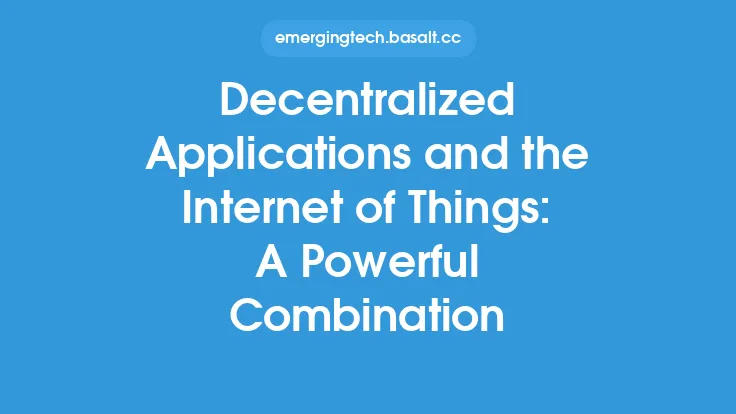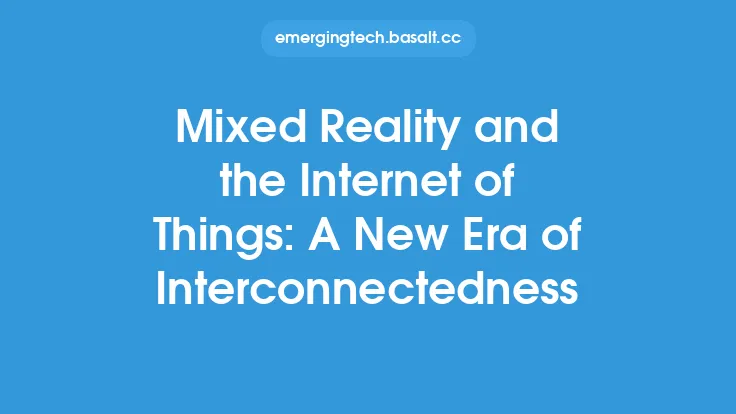The rise of decentralized applications, also known as dApps, has marked a significant shift in the way we interact with the internet. These applications, built on blockchain technology, operate on a decentralized network, allowing users to access and utilize various services without relying on a central authority. This new era of internet interaction has opened up a world of possibilities, enabling greater security, transparency, and autonomy for users.
What are Decentralized Applications?
Decentralized applications are software programs that run on a blockchain network, utilizing smart contracts to execute specific tasks. These applications are designed to be decentralized, meaning that they are not controlled by a single entity, but rather by a network of nodes that work together to validate and record transactions. This decentralized architecture allows for greater security, as there is no single point of failure, and data is stored across a network of nodes, making it more resistant to tampering and censorship.
Key Characteristics of Decentralized Applications
Decentralized applications have several key characteristics that distinguish them from traditional applications. These include:
- Decentralized governance: dApps are governed by a community of users, rather than a central authority, allowing for greater autonomy and decision-making power.
- Open-source code: dApps are built on open-source code, allowing developers to review, modify, and distribute the code as they see fit.
- Blockchain-based: dApps utilize blockchain technology to record and verify transactions, ensuring the integrity and security of the network.
- Token-based economy: many dApps utilize tokens, which are used to incentivize users to participate in the network and provide a means of exchange.
How Decentralized Applications Work
Decentralized applications work by utilizing smart contracts, which are self-executing contracts with the terms of the agreement written directly into lines of code. These contracts are stored and replicated on a blockchain network, allowing for the automation of various processes and tasks. When a user interacts with a dApp, they are essentially interacting with a smart contract, which executes the desired action and updates the blockchain accordingly.
Benefits of Decentralized Applications
Decentralized applications offer several benefits, including:
- Greater security: dApps are more resistant to hacking and data breaches, as data is stored across a network of nodes, making it more difficult to manipulate.
- Increased transparency: dApps provide a transparent and tamper-proof record of all transactions, allowing users to track and verify the integrity of the network.
- Autonomy: dApps allow users to interact with the application without relying on a central authority, giving them greater control and autonomy.
- Censorship resistance: dApps are resistant to censorship, as there is no single point of control, making it more difficult for authorities to shut down or manipulate the application.
Examples of Decentralized Applications
There are many examples of decentralized applications, including:
- Cryptocurrencies: such as Bitcoin and Ethereum, which utilize blockchain technology to facilitate peer-to-peer transactions.
- Decentralized finance (DeFi) platforms: such as MakerDAO and Compound, which provide lending and borrowing services without relying on traditional financial institutions.
- Social media platforms: such as Mastodon and Diaspora, which allow users to share and interact with content without relying on a central authority.
- Gaming platforms: such as CryptoKitties and Decentraland, which allow users to create, buy, and sell unique digital assets.
Challenges and Limitations of Decentralized Applications
While decentralized applications offer many benefits, they also face several challenges and limitations, including:
- Scalability: dApps often struggle with scalability, as the blockchain network can become congested, leading to slow transaction times and high fees.
- User experience: dApps can be complex and difficult to use, making it challenging for new users to adopt and interact with the application.
- Regulation: dApps often exist in a gray area, as they are not subject to traditional regulations, but may still be subject to laws and regulations in certain jurisdictions.
- Security risks: while dApps are more secure than traditional applications, they are not immune to security risks, and users must still take precautions to protect their assets and data.
Conclusion
Decentralized applications have the potential to revolutionize the way we interact with the internet, providing greater security, transparency, and autonomy for users. While they face several challenges and limitations, the benefits of dApps make them an exciting and rapidly evolving field. As the technology continues to develop and mature, we can expect to see more innovative and practical applications of decentralized technology, enabling a new era of internet interaction that is more secure, transparent, and empowering for users.





